The Tenant (1976)
Directed by: Roman Polanski
Written by: Gérard Brach, Roland Topor, Roman Polanski
Starring: Isabelle Adjani, Jo Van Fleet, Melvyn Douglas, Roman Polanski
AKA LA LOCATAIRE
FRANCE
AVAILABLE ON BLU-RAY [REGION ‘A’ AND ‘D’ ONLY], DVD and DIGITAL
RUNNING TIME: 122 mins
REVIEWED BY: Dr Lenera
SPOILERS!
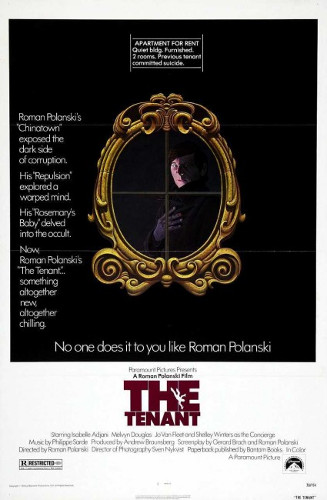
In Paris, shy business clerk Trelkovsky rents an old apartment where the previous tenant, an Egyptologist Simone Choule, committed suicide. Soon, he’s plagued by a series of bizarre events, including visions of mysterious strangers watching him in the communal bathroom window, weird conversations with his neighbours, and a combative relationship with the building’s concierge. Could it all have something to do with the ghost of the previous occupant? Is Trelkovsky slowly losing his mind? If so, is it part of some intentional plot? Maybe his friendship with Choule’s friend Stella may help?….
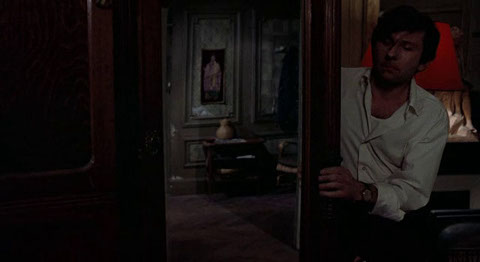
It was probably the ending that did it, and yes, I’m going to be very spoilerific, so if you haven’t had the pleasure of seeing this tremendous horror film [that was probably better known as a psychological thriller at the time due to the usual snobbery but – folks – it’s a horror film and a pretty frightening one] and don’t want to know what happens at the end, please skip this first paragraph and move on to the second. The Tenant haunted me for ages after I first saw it, but that ending really messed with this twelve year old’s head. Roman Polanski’s character does what we desperately don’t want him to do, which is bad enough; most films, at least of the kind I’d seen up to then, would have had him stopped at the last minute from throwing himself out of that window. But then, he manages to get up from the ground, struggle back into the apartment block and up to his apartment, then do it again! Did Polanski have something against apartments, seeing as this was the third part of his ‘Apartment Trilogy’ which also comprised Repulsion and Rosemary’s Baby, while he went on to exploit them again in Carnage and the middle section of The Pianist? Maybe he had bad experiences living in one, though here he also seems to be using it as a metaphor for alienisation; continually being surrounded by people but actually very much alone. It struck me upon this viewing that one of the things he was doing was putting on film the feelings of being a foreigner living in another country; Trelkovsky is a French citizen but his Polish accent clearly puts people off while most French people seem intimidating or sinister. Of course we’re also seeing the bringing on of paranoid schizophrenia, even if, unlike the previous two ‘Apartment’ films, it’s not made clear if some things are real or not. And no other Polanski film combined the humorous and the scary this well; it’s often at its most terrifying when it’s at its funniest.
This was originally to have been made by Jack Clayton, who was attached to the project in 1969. There was a script by Edward Albee based on the 1964 novel “Le Locataire chimérique” by Roland Topor, first published in 1964, but this version never made it into production after the relationship between Albee and the studio soured. Paramount bought the rights on Clayton’s advice in 1971, and Clayton returned to the project in 1975, with a script by Christopher Hampton written while Clayton was preparing The Great Gatsby. By the time he’d completed that, he’d learned that Polanski was interested in the project and wanted to play the lead role. While Clayton was preparing foreign language versions of the Robert Redford starrer for the European market, studio head Barry Diller began negotiations with Polanski. Although Clayton later insisted that he was never specifically asked if he was still interested, and never said “no” to it, Diller assumed that Clayton had lost interest and transferred the project to Polanski, without asking Clayton, who was very unhappy. Seeing as Clayton made The Innocents, I think it’s fair to say that his version could have been every bit as good as Polanski’s. Polanski himself claims in a recent interview that Paramount weren’t doing anything with the project until he came along. Sylvia Kristel was originally cast as Stella, but after one day of shooting, she was replaced by Isabelle Adjani for reasons unknown. The film was made quickly, with sets being built while Polanski and Gerard Brach were writing the script, closely adapting Topor’s book. When the Minister of Culture for France attended a private showing along with one critic, this turned most of the French critics against the film, nor did it do well anywhere. In the UK the video version fell foul of head censor James Ferman’s nunchaku [chain sticks] obsessions six seconds cut from a clip from Enter The Dragon.
The opening is absolutely terrific and I can’t think of a better way for Polanski to start things off. On a crane, the camera takes us, over the course of a few minutes, up and down and around the outside of the apartment block, sometimes returning to one particular apartment, on one occasion moving right from this particular abode to fix on the exact same apartment a few rooms across in a seamless effect. We have been given more than a flavour of the principal setting, and we also get more than a flavour of what’s to come with glimpses of a woman, Polanski himself, and one merging into the other, though I do wonder if that last bit gives away too much. Still, the appropriate atmosphere is immediately created and never subsequently goes away, even during scenes that seem to be on the surface lighter. Take a sequence when Georges, a boyfriend of the dead woman Simone, turns up out of the blue and Trelkovsky updates and comforts the man and takes him out for a night’s drinking. Sounds like a nice respite for both characters, but then in one bar a drunk offers to buy everyone in the place a drink, but except for Georges; we don’t know why Georges is the exception, but it immediately adds an edge to the proceedings. As soon as Trelkovsky first encounters the concierge, she’s cold, as is the manager Mr. Zye who doesn’t even look at him for the first couple of minutes of their conversation. The apartment doesn’t look that grim, but it has a dripping tap [though not as continuously recurrent as Mario Bava’s], while the shared toilet room not only has a tooth in a hole but Egyptian hieroglyphics all over one of the walls. And from there Trelkovsky can see inhabitants of the apartments opposite just standing there, motionless, sometimes looking at him, sometimes not, but looking very creepy indeed.
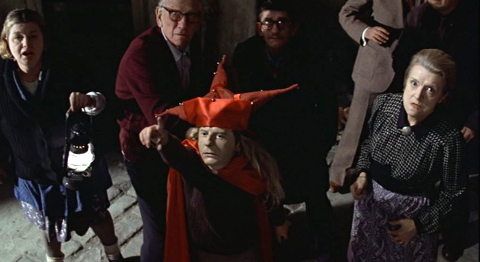
Trelkovsky visits Simone and is a bit too fascinated by what he sees: a body swathed in bandages, one leg in a cast, only one blackened eye and the mouth visible. And then she utters one of the most blood-curding screams you’ll ever hear in a movie. Trelkovsky and Simone’s friend Stella go out for a drink, and then the cinema where she ‘comes on’ to him, but their lust is severely dampened by the fact that the person sitting a couple of rows behind them can see everything. Later on, in what is in the opinion of this writer the most unbelievable bit in the entire film, she tries to initiate sex with him but he’s not interested – though by now he’s already going a bit mad, saying stuff like: “If you cut off my head, what would I say? Me and my head, or me and my body? What right has my head to call itself me?” Some may find Adjani’s character somewhat thrown in there to provide a male fantasy figure, but it seems to me that she represents the normal, conventionally sexual world that Trelkovsky is leaving behind as he retreats more and more into not just himself but the previous occupier of his apartment. The Scream Factory Blu-ray includes the French language version where you hear Adjani’s original voice, as opposed to the English language version where you don’t. The film was shot in English though the French performers were still dubbed, yet the French language version feels more authentic to me despite the fact that only Polanski is actually mouthing French, and Adjani’s performance benefits considerably. Polanski is fine in his role in both languages, small and vulnerable, easily convincing as the kind of guy who seems as if he’s has to put people off all his life. All Trekelsky wants to do is not bother anyone, yet he keeps doing this anyway. Polanski is especially strong when Trejovsky is seemingly possessed by Simone, not just beginning using her brand of cigarettes but starting to wear her clothes and becoming effeminate.
Trelkovsky has his workmates round for a housewarming party but gets into trouble because of the noise. He’s also told off for not signing a petition to rid of another neighbour, a neighbour who may or may not be all that she seems but who certainly causes Trelkovsky to have a breakdown when he’s surprised by her. It seems quite understandable that he distrusts his neighbours, because we’re invited to view them as suspicious. In fact we’re invited to view anybody as suspicious except for Stella, which is the thing which makes all those talky scenes [which probably wouldn’t be bothered with if this film was made today] still rather sinister. Polanski still gives us some unsettling moments of horror which are conceptually quite simple, especially in these days of elaborate computer graphics, but superbly pulled off. A bouncing ball that becomes a bouncing human head is creepy but also a logical continuation of things Trekovsky has been saying earlier. An image of Simone unwrapping her bandages that Trekovsky sees in apartment window is gorgeously lit and resembles a medieval painting; cinematographer Sven Nykvist, who shot most of Ingmar Bergman’s films, deserves a mention here but also elsewhere for exploiting to the full his predominately brown and black palette. Some of the dark shadings in Trekovsly’s apartment are worthy of the greatest film noir. Trelkovsky does sometimes go outside, even hitting a child in a park in one strange moment. I don’t why it’s there, but it’s clearly there for a reason.
Some first time viewers today may find The Tenant too slow and long. I didn’t when I saw it as a kid, but back then we were more used to things that took matters at a more leisurely pace. The plot takes ages to get into gear, it sometimes takes little detours, and there’s a hell of a lot of time spent with Trelkovsky in his apartment with little really happening. But this was often Polanski’s style, he liked to take his time, and what you lose in excitement and pace you gain in atmosphere and feeling, while the scary highlights are made scarier because there’s been a far longer build up. The odd laugh out loud moment comes along, such as Trekovsky reading aloud from a newspaper a story about how someone singing Tosca at 3am was shot dead by an irate neighbour the morning after his noisy late night of revelry with friends [though they don’t behave much like friends] angered Mr. Zye. Like Hitchcock with Psycho, Polanski sees the film more as a comedy than anything else, and there is indeed a dark or absurdist humour in much of what we see. The best chuckles combine with the horror, like when the priest at Stellar’s funeral suddenly, at least in Trelkovskys’s head, goes on about putrification. One can endlessly debate about which parts of The Tenant are real or not. I have my own theories. Are the hieroglyphics important? Ancient Egyptians believed that everything is always happening at once. Maybe Trelkovsky is always the same as Simone and doesn’t really exist. If you know about Polanski’s often traumatic life right back to his childhood as a Jew in Nazi-occupied Poland, that idea may have often been attractive to him, though of course loss of identity is a very frightening and a very real thing if you’re an immigrant in a country where it feels like you’re not welcome. Polanski may not have originated the story, but The Tenant must still be one of his most personal works – and therefore one of his most essential.
Rating: 











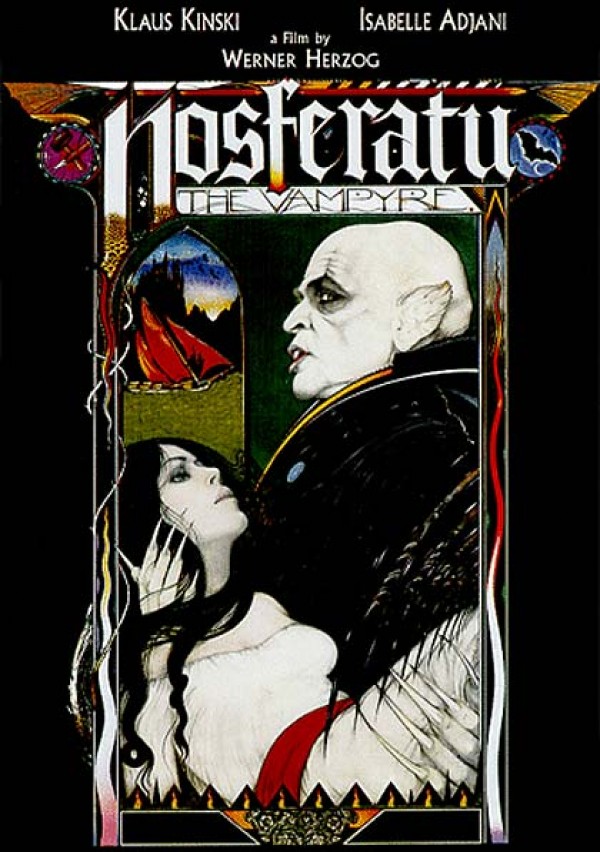
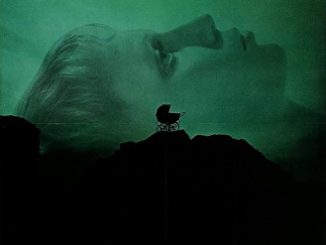
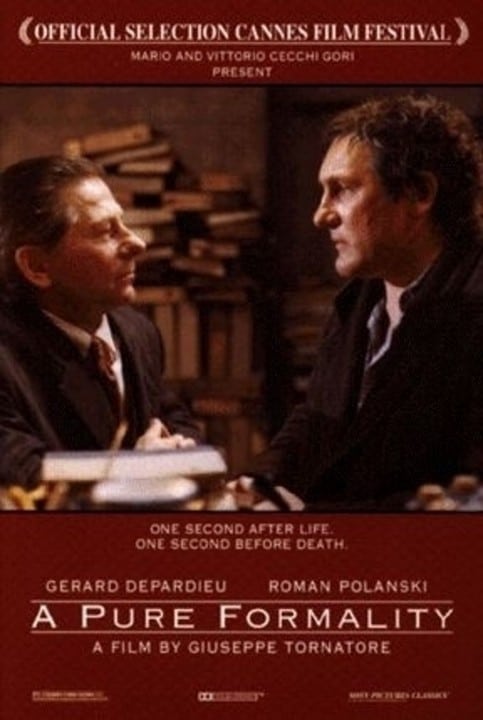
Be the first to comment